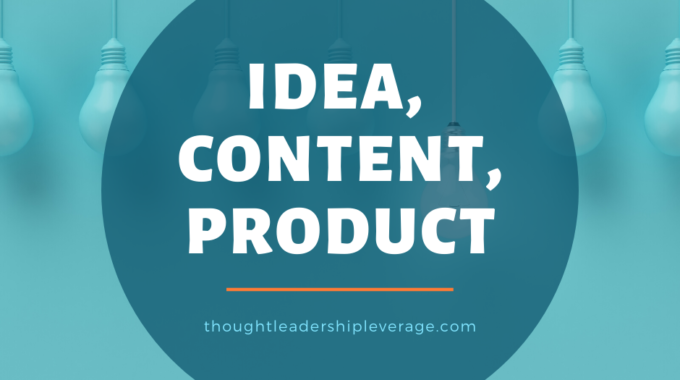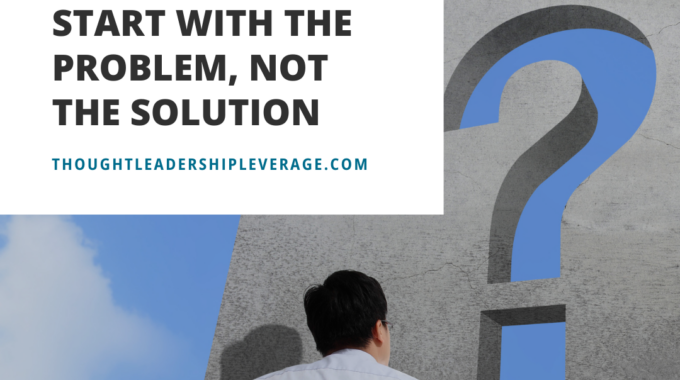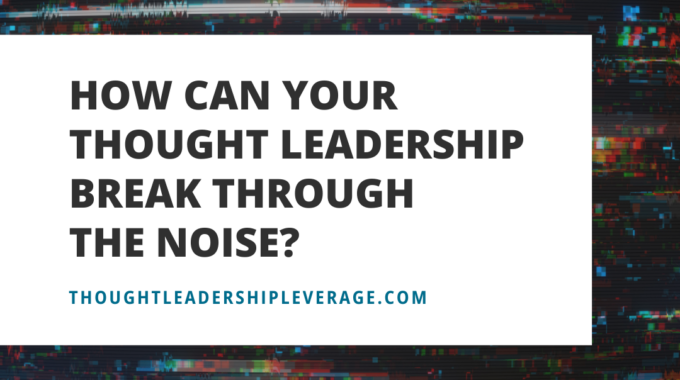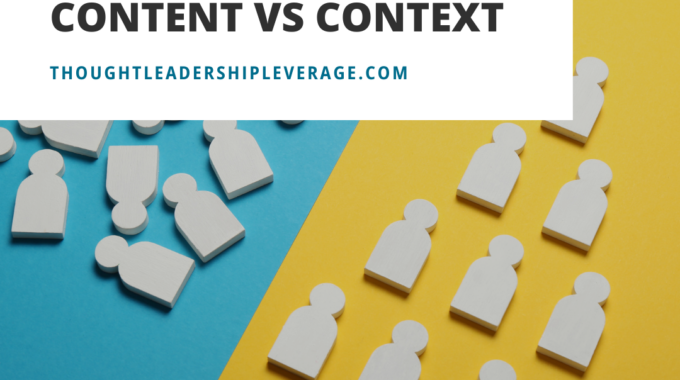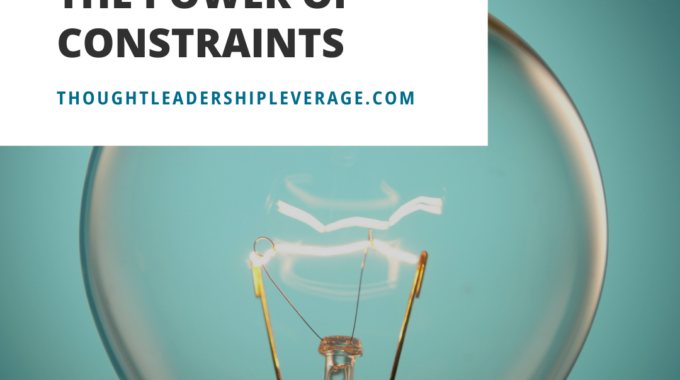Hey, thought leaders! I want to tell you about a powerful approach to thought leadership…
Idea, Content, Product
A lot of brand-new thought leaders confuse “content” with “product.” It’s all stuff that’s been created from your great ideas, right? So, what’s the difference?
- An idea is a concept, conceived in your mind and based on your experiences.
- Content is the manifestation and in-depth definition of your ideas.
- Product is the modality through which you deliver content. It often requires a financial transaction.
An idea without content is “what is the sound of one hand clapping?” It’s a riddle, a koan. Other people won’t understand your insight until they see it in context. Whereas ideas are “aha!”s, content is the explanation of those moments of inspiration, so that other people can understand them, too.
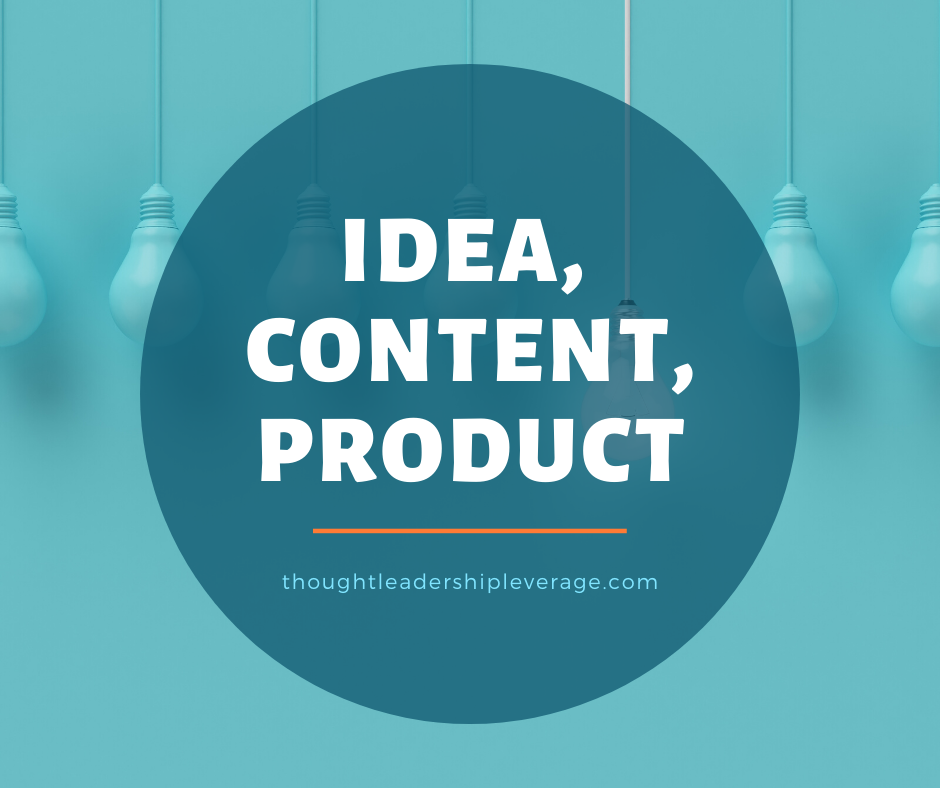
You can put content out on social media, you can share it on Facebook and Twitter, and you can write books about it. But as soon as that content becomes saleable – whether you charge for it or not – it becomes a product.
When you buy content, it comes in a package called product.
Content fills product with value. By creating a product, you shape your content into a form that others can apply, whether that’s a learning program, a diagnostic, educational videos, or something else. Product is the modality by which you share content with others.
When a thought leader gives a keynote, they are selling their time, and filling that time with content. The content in the speech may also be contained in the thought leader’s other products. The speech is the product, not the content. The thought leader may have other products, other ways of disseminating and applying their content. The same content can be deployed across multiple products. The content is the same, but how it is packaged and used – that’s what makes each product different.
You can have content without buyers or users; material that just sits in a drawer. But if you want to reach people, you have to shape that content into products. Content isn’t solving any pain points on its own. Product is packaged content that allows others to learn and apply your ideas. Products solve pain points with content.
Here’s another thing. If you haven’t documented your ideas and explained them through the creation of content, then all of your products will require you to be in the room. That means your products are ephemeral; speeches, workshops, consulting, that sort of thing. If you document your content, then you can create products that can transfer your ideas to learners without your presence. They can learn (and apply) your ideas while you stay home.
You are the container of undocumented content; ideas.
When you write ideas down and make them tangible, it becomes content. When you put that content into use, it becomes a product. These may be subtle differences, but if you understand the distinction, you can take your “aha!”s and turn them into real solutions that create value to your clients – even when you’re not in the room.
